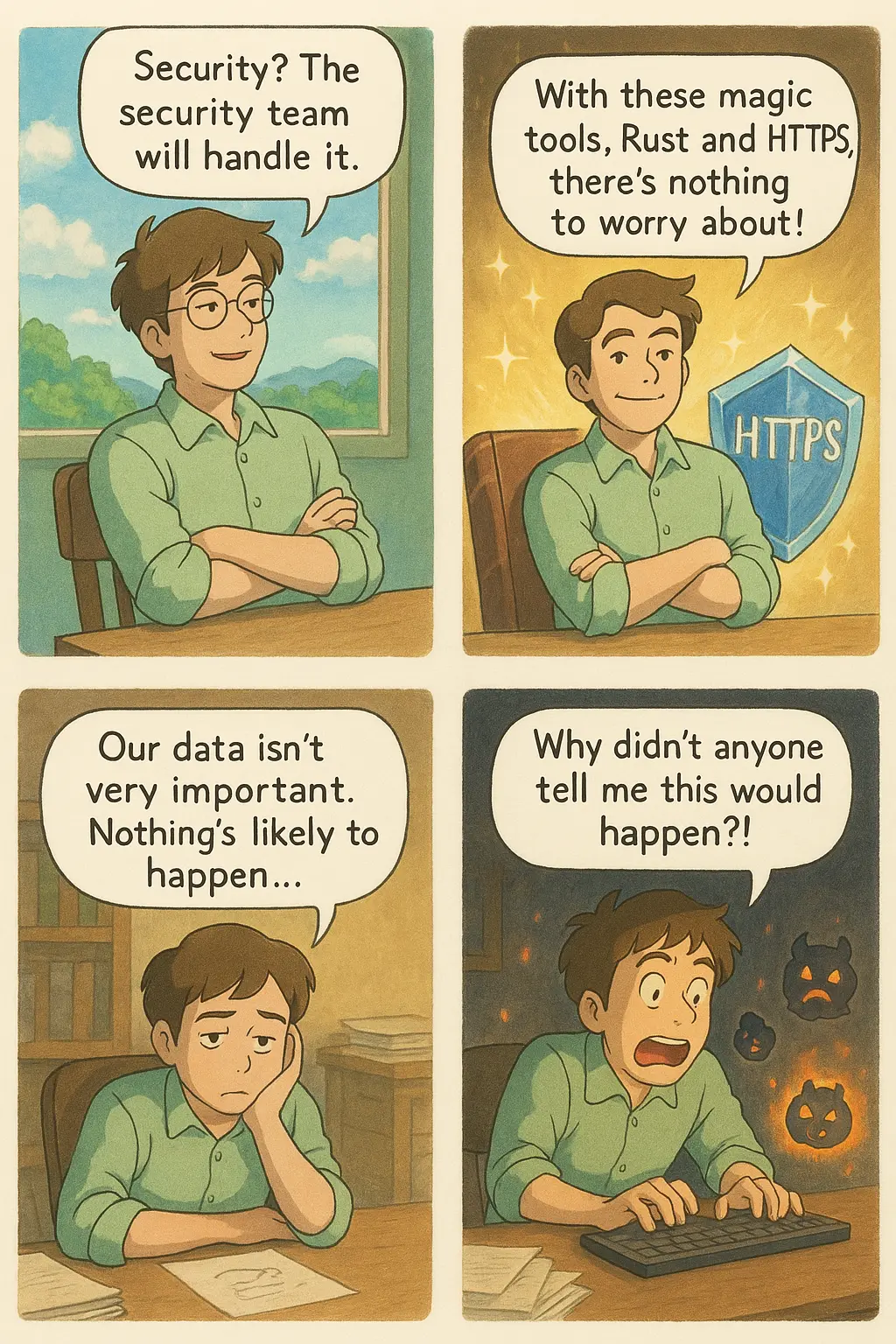
As modern software development grows more complex and security threats more frequent, developers often fall into common misconceptions about security responsibilities and protections. This article categorizes the most common developer security myths into three groups—Responsibility Deflection, Overconfidence in Technology, and Security Underestimation—and provides realistic, actionable counterpoints.
📌 1. Responsibility Deflection
Myth: “Security is the security team’s responsibility, not mine.” Reality: Developers play a critical role in ensuring secure applications. In DevSecOps environments, security is a shared responsibility. When developers overlook security from the early stages, vulnerabilities can easily creep into code (source).
Myth: “We use GitHub, AWS, and other SaaS platforms—so we’re safe.”
Reality: While SaaS providers offer security measures, users are still responsible for correct configurations and avoiding insecure integrations. A recent GitHub Actions supply chain attack via tj-actions/changed-files exposed the risks (source).
📌 2. Overconfidence in Technology
Myth: “Our code is written in Rust, so it’s secure.”
Reality: Rust ensures memory safety and prevents data races, but doesn’t automatically guard against threats like SQL injection or XSS. Using unsafe blocks can reintroduce vulnerabilities. Carnegie Mellon’s SEI outlines Rust’s limits, especially regarding third-party library misuse and injection attacks (source).
Myth: “We use the latest frameworks and libraries—it must be secure.” Reality: Modern tools are not immune to security flaws. Without regular updates and proper usage, vulnerabilities remain. A study found 86% of open-source codebases include known vulnerabilities (source).
Myth: “HTTPS keeps our data safe.” Reality: HTTPS secures data in transit but does not protect against server-side vulnerabilities, misconfigurations, or insider threats.
Myth: “A firewall protects us from external threats.” Reality: Firewalls can be misconfigured and don’t protect against insider threats or attacks using trusted connections.
📌 3. Security Underestimation
Myth: “We don’t handle sensitive data, so security isn’t a concern.” Reality: Even seemingly harmless systems can become entry points for attackers to access larger networks.
Myth: “Code reviews will catch all the security issues.” Reality: Code reviews are useful, but without security expertise and automated tools, many vulnerabilities go undetected. Regular testing and security scans are essential.
Myth: “We’ve tested the code—so it must be safe.” Reality: Functional tests don’t cover security flaws. Security testing must be a separate, ongoing process involving both design and runtime analysis.
📌 Real-World Incidents
GitHub Actions Supply Chain Attack (2025)
→ Over 23,000 repositories at risk of CI/CD secret exposure (source).Log4Shell Vulnerability (2021)
→ Critical remote code execution vulnerability in Apache Log4j affected systems globally (source).
📌 Recommendations for Developers
Provide Regular Security Training
Focus on practical awareness, using OWASP Top 10 as a foundational guide (source).Integrate Security Automation
Use tools like SAST (Static Analysis), DAST (Dynamic Analysis), and SBOM (Software Bill of Materials) to continuously monitor code.Manage Open Source Dependencies
Employ automated tools like Dependabot or Renovate to detect and patch vulnerable libraries.Pin Dependency Versions
Use commit hashes instead of floating tags (e.g.,@v3) in GitHub Actions to avoid supply chain attacks.
Security isn’t just about tools—it’s a shared culture and ongoing process that must be built into how we write, test, and deliver code.